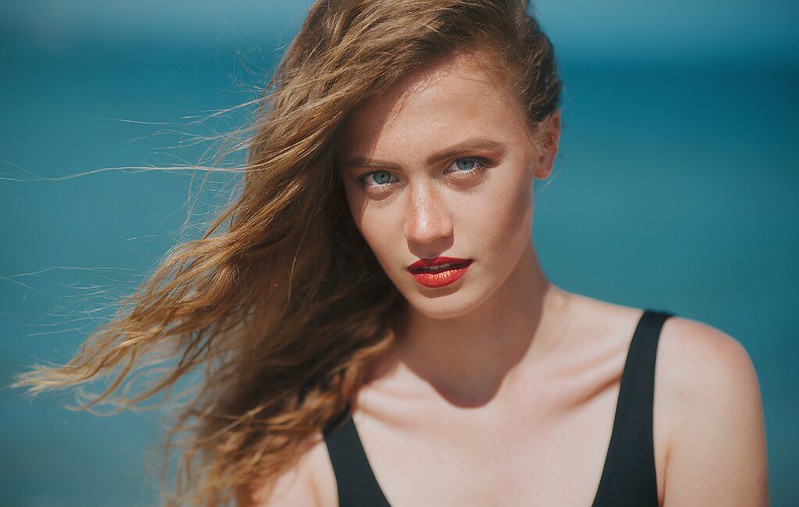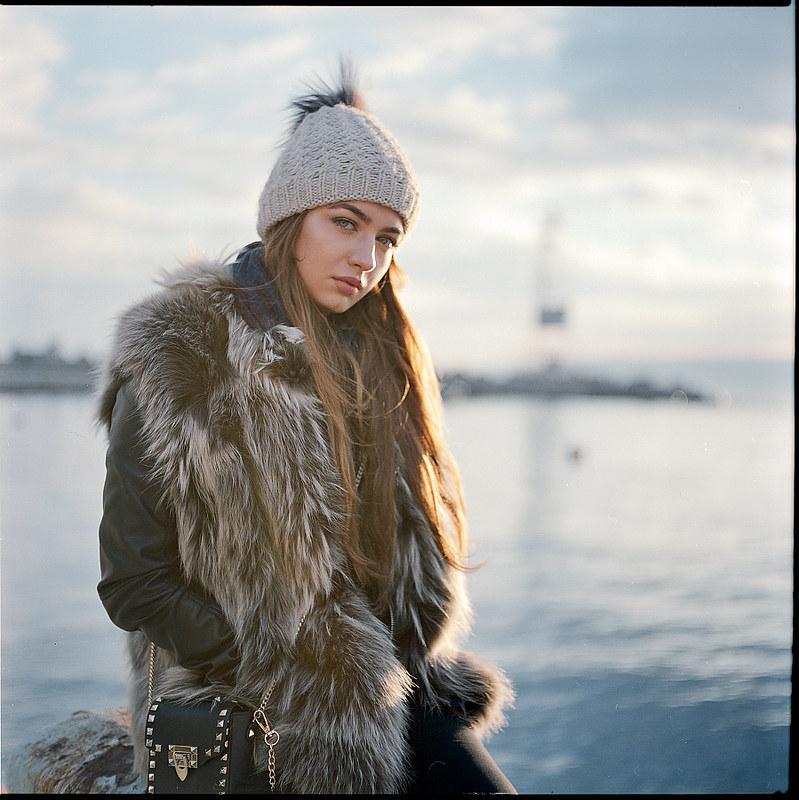Learn more about the talent behind the lens.
July 19, 2017
By Dominika Lirette / Photo: Blush Wedding Photography
You only get married once (hopefully), so finding the right wedding photographer to capture all of the day's special moments is a must. And because these seasoned shutterbugs have become known for snapping the most breathtaking images in the industry, we decided to turn the cameras on them (figuratively speaking, of course) to get the scoop on what couples can expect before, during and after the wedding day.

(Photo: Blush Wedding Photography.)
Who: Kristy Ryan and Ken Yiem
Cost: $4,900 to $11,500.
What does your package include?Every package includes two photographers and 750-plus photos. From there, people can add photography hours, albums, parent albums and guest books.
How would you describe your style?We like to say we capture our couples' heart and style. [My husband] captures the moments with a photojournalistic style, and I capture all the details and give the photos an editorial look with a fine art style.
What do you look for when you are taking wedding photos?We look for moments that capture a feeling that years down the road you will cherish—like a look in the father's eye. When capturing wedding details, I look for a consistent colour story and clean lines so all the shots will look good together.
What are your favourite moments to capture on film?All of them. But, to name a few: the bride seeing herself for the first time in her dress, the first look, when their partner says "I do," and the walk down the aisle.

(Photo: David and Sherry Photography.)
Who: David and Sherry Buck
Cost: $3,500 to $5,000 (photography only); $4,500 to $9,000 (photography and albums)
What does your package include?All of our packages include two photographers and a full gallery of high-resolution, edited, finished digital images. Some packages include printed materials, such as albums.
How would you describe your style?We are best known for our creative fine art photography with moments of photojournalism.
What do you look for when you are taking wedding photos?We look for many things during weddings, the most important being good light. All great artwork through the ages is timeless because of its great use of light. We look for light first, then emotion, composition and style. If the light isn't present, we will create it.
What are your favourite moments to capture on film?I love the look on the groom's face when he sees his bride for the first time in her wedding gown. These moments make me tear up even while I'm photographing.

(Photo: Jozef Povazan.)
Who: Jozef Povazan
Cost: From $4,000 (average client spends $6,000 to $8,000)
What does your package include?I personally photograph every wedding client. All of them receive a handmade Italian leather album and USB flash drive with edited images.
How would you describe your style?Unique, edgy, fun, modern, creative wedding storytelling.
What do you look for when you are taking wedding photos?The story of all people invited. Emotions and expressions, which put these images together in a very personal way.
What are your favourite moments to capture on film?The day will reveal it, as every wedding is unique. So I have no expectations, yet enjoy the whole day and show how it took place in my artistic way.

(Photo: Justine Boulin Photography.)
Who: Justine Boulin
Cost: From $4,100 (custom pricing available for small, intimate weddings)
What does your package include?I have packages that include all the edited digital images only (usually between 800 to 1,000), or digital images plus albums. As of now, they all include a second shooter.
How would you describe your style?Documentary. I love to capture the candid 'realness' of the wedding day—the emotions, the honesty and what it felt like. My goal is not to pose you all day and not to shoot for my portfolio. Instead, I capture the story of your wedding, and who you are as a couple, and what makes you unique.
What do you look for when you are taking wedding photos?Relationships and moments between people—intimate ones, funny ones, ones that tell a little bit about who you are and adds to the story of your wedding day.
What are your favourite moments to capture on film?The unexpected ones. We expect the bride to get her hair and makeup done, the couple to kiss. We expect the first dance and even expect to take posed pictures of the couple in pretty light. But, the unexpected ones are the best moments—the ones you can't predict.

(Photo: The Apartment Photography.)
Who: Jeff Chang and Cat McDowell
Cost: $4,200 to $7,300.
What does your package include?Two photographers are part of every package—they're designed to be simple, uncomplicated and to reward those who choose more services (like an engagement session), albums or more hours of coverage.
How would you describe your style?Our style comes in two parts. The first is capturing the image, which we do in a non-obtrusive photojournalistic way; it allows our images to be both casual and intimate without feeling forced, all while leaving room for a little creativity. The second part is editing, where, fun fact, for every hour of coverage on the wedding day, we typically spend four to five hours in post-production. Our style no doubt owes its roots to film photography, where natural grain, warmth and a sense of nostalgia are strong.
What do you look for when you are taking wedding photos?Authentic candid moments are what we really look for on a wedding day. Cat and I have spent years honing in on our skills and it's become abundantly clear that it takes experience to know where to be to really capture those moments as they unfold.
What are your favourite moments to capture on film?That's a really hard one to answer! It's probably a three-way tie between, kids being kids and doing goofy things, catching mom or grandma being either super emotional or laughing their heads off, and the bride and groom seeing each other for the first time on the day. The latter is a really sweet moment and we are so fortunate to be able to witness and capture it.

(Photo: Shari and Mike Photographers.)
Who: Shari and Mike Vallely
Cost: $4,700 (local weddings); $2,700 (elopements)
What does your package include?Our starting package includes up to eight hours of coverage, two photographers and approximately 800 high-resolution files. We also offer custom albums.
How would you describe your style?Describing our style always proves to be a difficult task. The words that have been used often to describe our work are honest, fresh, evocative and jovial.
What do you look for when you are taking wedding photos?The two things we look for most on a wedding day are: (1) Light. We are always watching to see how the current available light can enhance our photos and inspire us to create unique imagery; and (2) Human connection. We like to say that we are professional people watchers, constantly aware of what's happening around us, anticipating moments, and being ready to capture them through our perspective.
What are your favourite moments to capture on film?Real, un-rehearsed moments. Like when the bride, while dancing with her dad, bursts into tears when all the guests surrounding them begin to sing along with "You are my Sunshine." Or when the groom cannot contain his excitement after seeing his bride for the first time on their wedding day. Or when the dog walking the bride down the aisle decides the decorative tree is a good place to mark his territory.

(Photo: Jessica Lee Photography.)
Who: Jessica Lee Latone
Cost: From $2,300
What does your package include?Our packages include photography coverage, which varies based on the selected package, as well as a complimentary Welcome Package and access to an online gallery.
How would you describe your style?My photography style is quirky and fun, but still classic and romantic. I take a more photojournalistic approach to my work.
What do you look for when you are taking wedding photos?When I am photographing a wedding, I look for great moments and wonderful light.
What are your favourite moments to capture on film?My favourite moments are the ones full of raw emotion.
For more help planning your big day, subscribe to the Vancouver newsletter!
Source:
Meet Vancouver's Top Wedding Photographers





 (Photo: Blush Wedding Photography.)
(Photo: Blush Wedding Photography.)  (Photo: David and Sherry Photography.)
(Photo: David and Sherry Photography.)  (Photo: Jozef Povazan.)
(Photo: Jozef Povazan.)  (Photo: Justine Boulin Photography.)
(Photo: Justine Boulin Photography.)  (Photo: The Apartment Photography.)
(Photo: The Apartment Photography.)  (Photo: Shari and Mike Photographers.)
(Photo: Shari and Mike Photographers.)  (Photo: Jessica Lee Photography.)
(Photo: Jessica Lee Photography.)  Selfie with Mamiya m645 | 80mm 2.8 C @F16 | old ORWO NP22 80ASA B: Hi Simeon, can you tell us a little bit about yourself and how you came to use manual lenses?
Selfie with Mamiya m645 | 80mm 2.8 C @F16 | old ORWO NP22 80ASA B: Hi Simeon, can you tell us a little bit about yourself and how you came to use manual lenses?  A7rII | MC11 | Sigma 35mm 1.4 Art
A7rII | MC11 | Sigma 35mm 1.4 Art  A7rII | Tilt adapter | Sigma 35mm 1.4 Art
A7rII | Tilt adapter | Sigma 35mm 1.4 Art  A7r | Lens Turbo II | KMZ Zenitar 50 1.7
A7r | Lens Turbo II | KMZ Zenitar 50 1.7  A7r | Mitakon 50 0.95 II
A7r | Mitakon 50 0.95 II  A7rII | Mitakon 50 0.95 II | the image is a bokehrama stiched from 14 images
A7rII | Mitakon 50 0.95 II | the image is a bokehrama stiched from 14 images  A7r | Lens Turbo II | Canon FDn 85 1.2 L
A7r | Lens Turbo II | Canon FDn 85 1.2 L  A7rII | Soligor 85mm 1.8 Preset
A7rII | Soligor 85mm 1.8 Preset  A7r | Mitakon 50mm 0.95 II B: Is there a photographer which has inspired you?
A7r | Mitakon 50mm 0.95 II B: Is there a photographer which has inspired you?  A7r | Canon FDn 85 1.2 L B: Do you have a favorite lens at the moment?
A7r | Canon FDn 85 1.2 L B: Do you have a favorite lens at the moment?  A7r | Lens Turbo II | Canon FDn 85 1.2 L B: As I have seen you also shoot film, what do you think it gives you compared to digital?
A7r | Lens Turbo II | Canon FDn 85 1.2 L B: As I have seen you also shoot film, what do you think it gives you compared to digital?  Pentax ME Super | Samyang 85 1.4 IF | Fuji Superia 100
Pentax ME Super | Samyang 85 1.4 IF | Fuji Superia 100  Mamiya C330 | 80mm 2.8 Sekor | Kodak PORTRA 400
Mamiya C330 | 80mm 2.8 Sekor | Kodak PORTRA 400  Some of my vintage gear 🙂 B: What do you think is the best picture you have taken so far and why?
Some of my vintage gear 🙂 B: What do you think is the best picture you have taken so far and why?  NEX6 | Lens Turbo II | KMZ Zenitar 50 1.7 | Bokehrama from 15 shots B: Can you suggest a lens we should review?
NEX6 | Lens Turbo II | KMZ Zenitar 50 1.7 | Bokehrama from 15 shots B: Can you suggest a lens we should review?  NEX 6 | Lens Turbo II | Samyang 35 1.4
NEX 6 | Lens Turbo II | Samyang 35 1.4  A7r | Canon FDn 85 1.2 L
A7r | Canon FDn 85 1.2 L  NEX 6 | Samyang 85 1.4 IF The following two tabs change content below. Latest posts by Simeon Kolev (see all)
NEX 6 | Samyang 85 1.4 IF The following two tabs change content below. Latest posts by Simeon Kolev (see all)